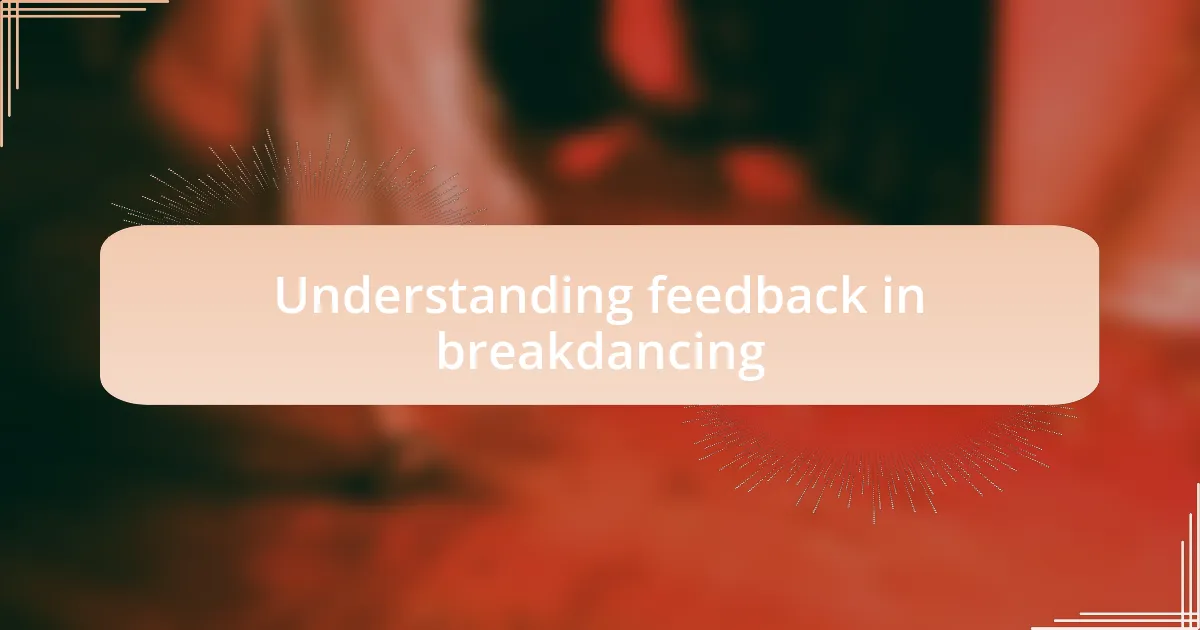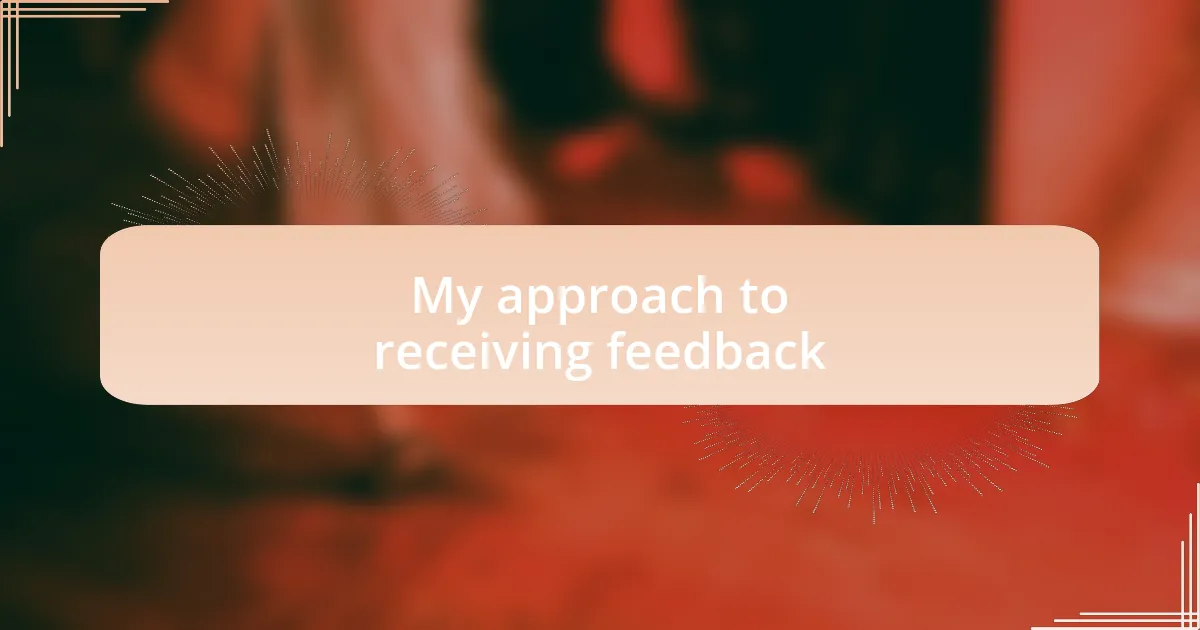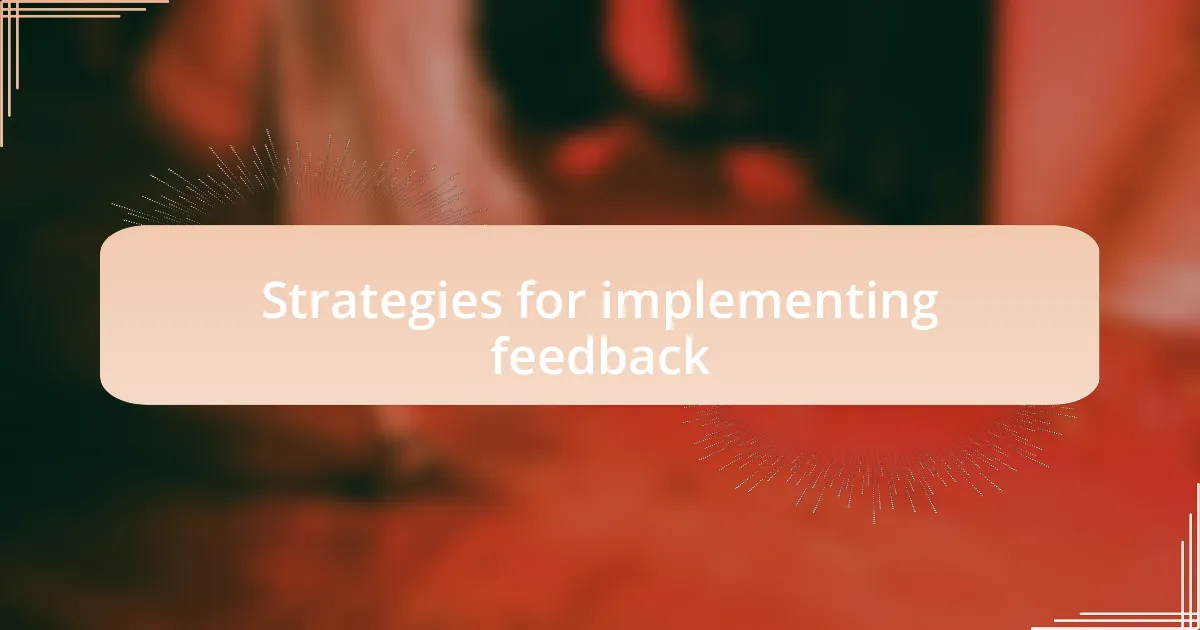Key takeaways:
- Feedback is a vital tool for growth in breakdancing, leading to significant enhancements in skill and style.
- Embracing feedback fosters a growth mindset, transforming critiques into opportunities for improvement and self-awareness.
- Engaging in open dialogue about feedback and reflecting on it can deepen understanding and promote personal development.
- Implementing feedback in low-pressure environments encourages experimentation and builds confidence in one’s abilities.

Understanding feedback in breakdancing
Feedback in breakdancing is a powerful tool for growth and development. I remember one time, after a particularly rough battle, a fellow b-boy pointed out that my transitions were lacking smoothness. At the moment, I felt a mix of frustration and curiosity. Was I really not as fluid as I thought? That feedback led me to really focus on enhancing my movements, and it was a game changer.
I often find that constructive criticism stems from both my peers and the community itself. When I first joined a new crew, I was overwhelmed by the wealth of knowledge around me. It’s like a treasure trove of insights waiting to be uncovered. Have you ever had someone suggest a slight adjustment that completely reshaped your style? It’s those small tweaks that often have the most significant impact.
Moreover, understanding feedback isn’t just about receiving it; it’s also about how I process it. I used to take critique too personally, but now I recognize it for what it is—a chance to elevate my skills. When someone says, “Try this instead,” I see it as an opportunity to refine my craft. It’s fascinating how shifting my perspective on feedback has transformed my learning experience in breakdancing.

Importance of feedback in dance
Feedback in dance goes beyond mere observation; it serves as a catalyst for improvement. I remember attending a workshop where the instructor pointed out my angles during freezes. At first, I felt a rush of embarrassment, but then I realized that this small adjustment could enhance my entire performance. It’s amazing how a single comment can open the door to new possibilities in our movement.
When I practice with others, I often cherish their input. Just the other day, a fellow dancer mentioned that I could emphasize my footwork more while attacking the beat. Initially, I felt defensive because I thought I had nailed the rhythm. However, embracing that feedback allowed me to explore a different dynamic in my style. It made me wonder: how many opportunities do we miss by not fully accepting the insights of our peers?
Moreover, reflecting on feedback has helped me develop a growth mindset. I used to dread receiving critiques, feeling like they highlighted my flaws. Yet now, each piece of feedback feels like a stepping stone on my journey. Isn’t it liberating to think that every suggestion could lead me closer to my personal best? I feel that by embracing feedback, we’re not just improving our dance; we’re also building resilience and self-awareness, traits that are invaluable both on and off the mat.

My approach to receiving feedback
When it comes to receiving feedback, I approach it with a curious mindset. Recently, during a jam session, a veteran dancer pointed out that my transitions could use more fluidity. At that moment, instead of dismissing the observation, I took a deep breath, acknowledged my initial discomfort, and asked for specific examples. Isn’t it powerful when we can turn a critique into a dialogue?
I’ve found that my emotional response to feedback often influences how I internalize it. One time, after a performance, a mentor mentioned my presence on stage felt a bit shy. Honestly, I felt a sting of defensiveness initially. However, reflecting on those words later made me realize that owning my space could elevate my performance immensely. It’s fascinating how vulnerability can become a vital ingredient in our growth.
Moreover, I make it a habit to write down feedback I receive, which serves as a personal roadmap. The other day, I revisited notes from a recent workshop, and I was surprised at how many insights I had forgotten. Seeing those comments in writing helped me connect the dots and prioritize areas for improvement. Have you ever experienced that “aha” moment when revisiting feedback? It can be incredibly enriching, guiding my practice in a meaningful way.

Strategies for implementing feedback
When I received feedback about my footwork, I decided to implement the suggestions right away. I took a few moments to break down the movements during practice, focusing on each step rather than rushing through them. Have you ever noticed how slowing things down can reveal aspects of your technique that you may overlook? It truly transformed my understanding of my own style.
I also like to try out feedback in low-pressure situations. During a casual practice session with friends, I tested some of the adjustments suggested by my peers. The relaxed environment allowed me to experiment without the fear of judgment. Isn’t it liberating to know that you can explore new ideas in a supportive space? This strategy not only builds my confidence but also creates an opportunity for further discussion and peer learning.
Lastly, I actively seek follow-up discussions after implementing feedback. After working on the fluidity of my transitions, I showed a fellow dancer the changes I made. Their encouragement and additional tips made the process feel collaborative and affirming. How often do we undervalue the power of connection in refining our skills? Engaging in conversations about our progress not only solidifies improvements but also fosters a sense of community within the breakdancing scene.